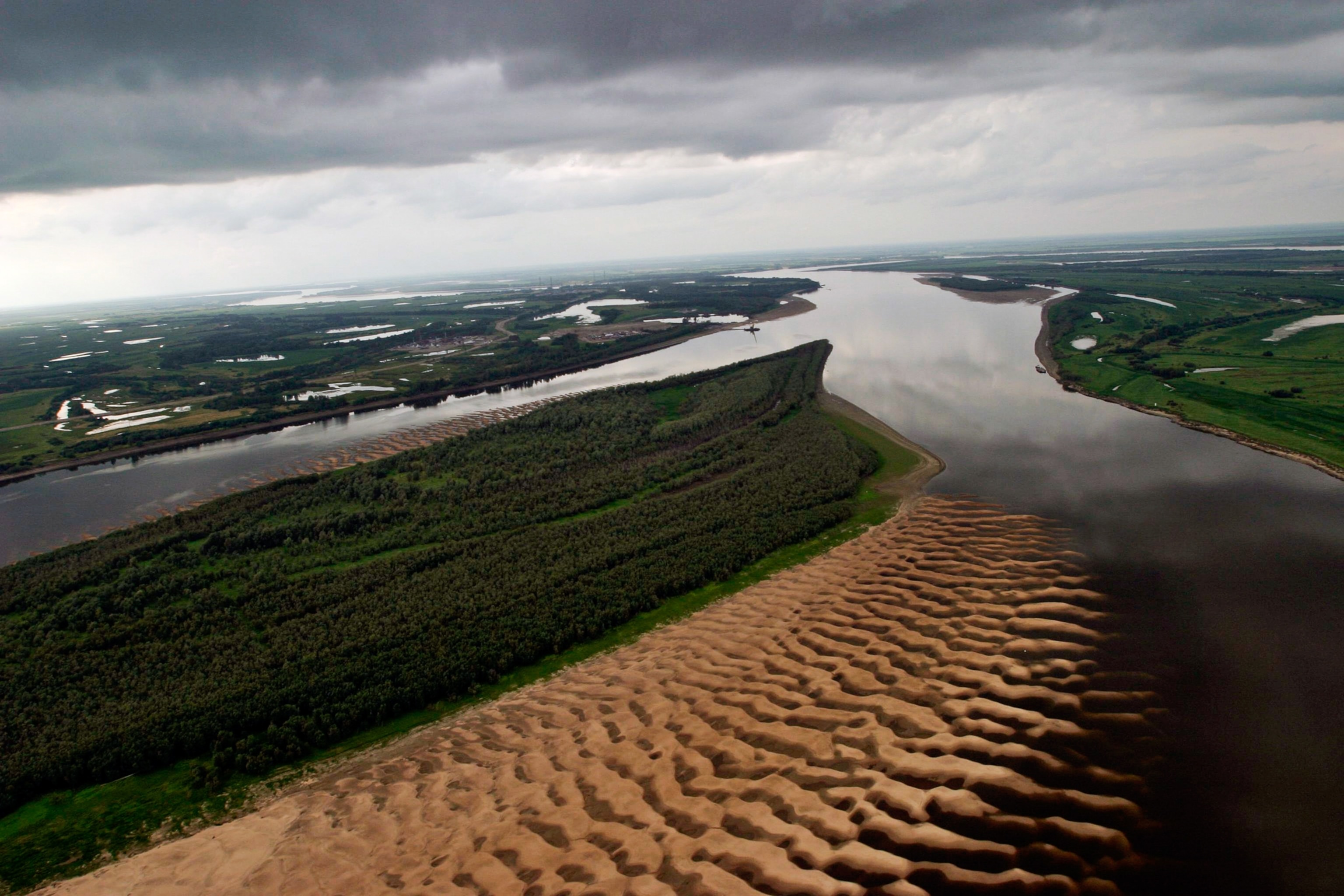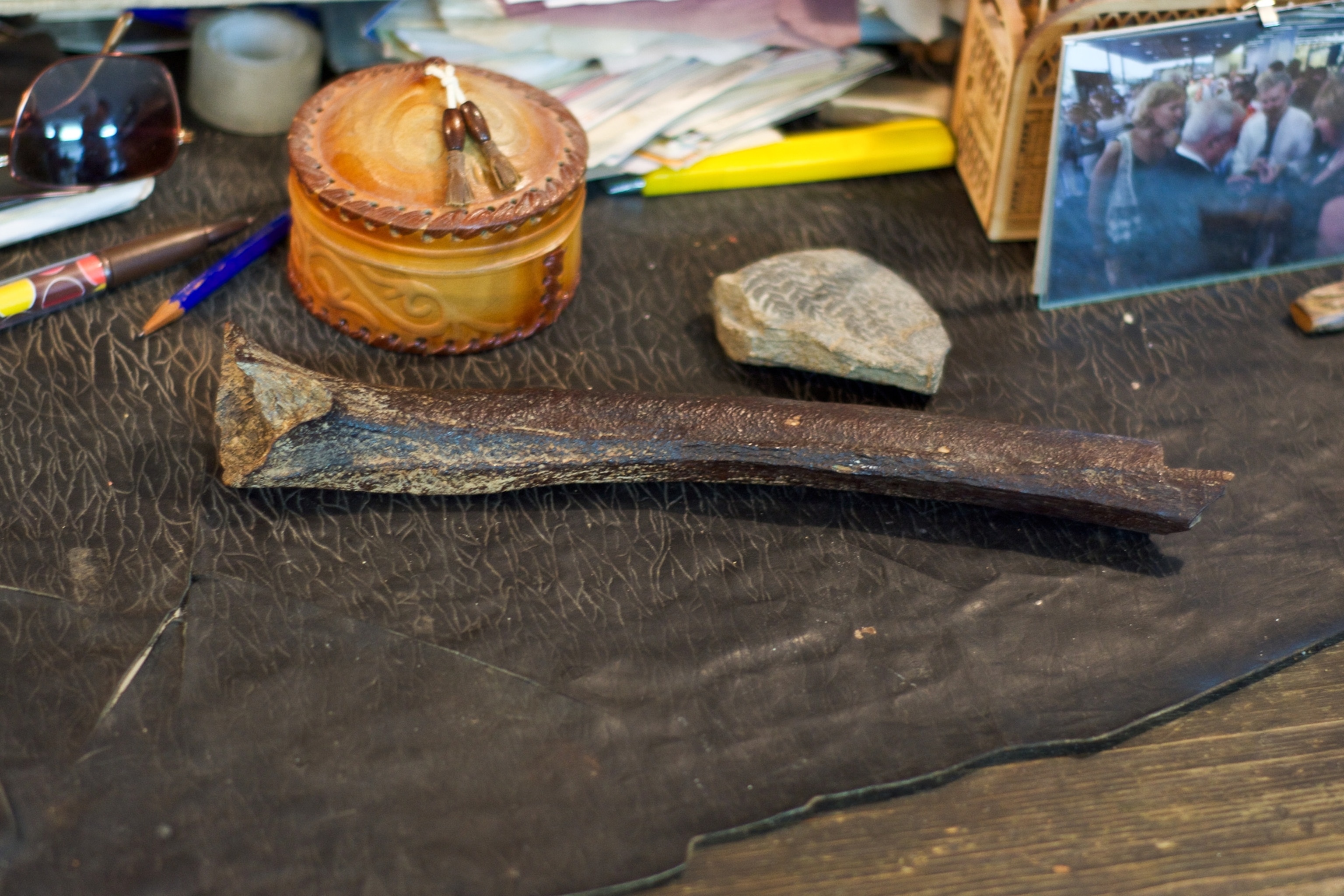
45,000-Year-Old Bone Pinpoints Era of Human-Neanderthal Sex
DNA from an ancient man in Siberia shows how Stone Age people spread into Asia.
Unearthed by an ivory carver from a Siberian riverbank, a man's 45,000-year-old thigh bone reveals when people first mated with Neanderthals, an international genetics team reports Wednesday.
The Ust'-Ishim man's thigh bone is the oldest human bone found so far outside of Africa and the Middle East, according to the report in the journal Nature. It's nearly twice as old as the next oldest from a modern human, which comes from a boy who died elsewhere in Siberia some 24,000 years ago.
Scientists collected DNA from the bone and analyzed the ancient man's complete genetic map, or genome. The DNA narrows down the time when mating first brought Neanderthal genes into the human gene pool: from 50,000 to 60,000 years ago.
"It's really exciting that we now have a really high-quality genome sequence of an early modern human that is this old," says study author and genetics expert Janet Kelso of the Max Planck Institute for Evolutionary Anthropology in Leipzig, Germany.
Recent DNA studies led by Max Planck's Svante Pääbo, another author of the new study, have found traces of Neanderthal in modern people. Typically about 1.6 to 2.1 percent of the genes in people of Eurasian descent are Neanderthal in origin. (Related: "Neanderthals Died Out 10,000 Years Earlier Than Thought, With Help From Modern Humans.")
Early Liaisons
Archaeological finds show that Neanderthals and modern humans overlapped in the Middle East as long as 100,000 years ago, says paleoanthropologist John Hawks of the University of Wisconsin in Madison. But the new DNA findings seem to rule out mating taking place until much later.
Previous studies put the timing of the earliest human-Neanderthal mating anywhere from 86,000 to 37,000 years ago.
The researchers narrowed that range to 50,000 to 60,000 years ago by calculating the loss of Neanderthal genes over time since the gene swapping occurred. The Ust'-Ishim man had about 2.3 percent Neanderthal genes, but modern people typically have less than 2.1 percent.
Using the mutation rate as a genetic "clock," the researchers extrapolated back to determine the era when modern humans picked up genes from Neanderthals.
"I think the paper is pretty convincing on this," Hawks says. But he cautions that the idea of a single time of human mating with Neanderthals "almost certainly is an oversimplification. The contacts could have extended over a longer period."
A possible second, more recent, episode may explain slightly higher numbers of Neanderthal genes common today in East Asians, according to the study.
Asian Migration
The femur shaft turned up on the banks of the Irtysh River near Ust'-Ishim, Russia, in 2008. A Russian ivory carver and historian named Nikolay Peristov collected the bone after it eroded from a bluff above the river in western Siberia. It was identified as human, based on its teardrop-shaped cross section, in 2010.

The age of the femur confirms the timing suggested by artifacts of the "first foragers" in Siberia, early hunter-gatherers who spread into Europe and Asia within the past 60,000 years, Kelso says.
"We now show that there were indeed modern humans in the area," she says. A slightly warmer climate in Siberia more than 45,000 years ago may have enticed modern people to migrate to the region.
Genetically, the thigh bone's owner appears equally related to modern-day Asians and Native Americans. Surprisingly, he appears to be about as closely related to them as to the 24,000-year-old Siberian boy or Stone Age European hunter-gatherers dated in other ancient DNA studies, notes paleoanthropologist Henry Harpending of the University of Utah in Salt Lake City, who was not part of the study.
Of modern groups, the Ust'-Ishim man is less closely related to Europeans, perhaps because today's Europeans owe some of their ancestry to farmers who migrated there from the Middle East more than 10,000 years ago.
The ancient man's DNA does not appear to make him a direct ancestor of any modern people. He may have belonged to a branch of Stone Age people who migrated into Europe and Central Asia long ago, only to die out in an ice age.
Follow Dan Vergano on Twitter.




